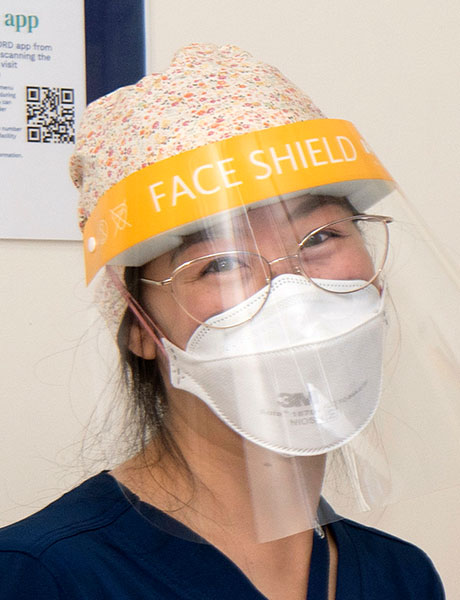There have been many reports of a longstanding shortage of nurses in Australia (Health Workforce Australia, 2014; World Health Organization, 2020). It would be ignorant to believe otherwise. Compound this with an ageing population, increasing demands and the additional challenges COVID-19 has brought, and there is now even more pressure on our health care systems to deliver efficient and effective care.
One way of addressing this problem is to consider alternative health workforce models. The recently developed Registered Undergraduate Student of Nursing (RUSON) model that is currently running in Victoria is one example of creating workforce opportunities.
What is a RUSON?
RUSONs are individuals registered with the Australian Health Practitioner Regulation Agency (AHPRA) as student nurses. They must also be enrolled in an undergraduate nursing degree at a university and have completed at least 12 months of their Bachelor of Nursing or equivalent (Department of Health and Human Services, 2020). They are employed in acute, subacute, and aged care settings. Their role, under the delegation and supervision of a registered nurse, is to help provide patient care within a defined scope of practice.
RUSONs are a great resource to patients, carers, staff, health services and the community. As a recent graduate, I would like to share a RUSON’s point of view, focusing on the transition from student to graduate nurse.
A personal perspective on being a RUSON
As RUSONs are a relatively new role in many settings, understanding the concept of working within my scope of practice and delegation was imperative. I had to think whether I was a student nurse on placement or a RUSON at work to ensure I was always practising within my scope of practice. I learnt to explain and politely decline things outside my scope. As a graduate nurse, I am confident practising within and escalating anything beyond my capability.
My scope of practice as a RUSON was defined by the specific health care facility position description and clearly outlined in a duties and exclusion list. In my employment, I practised providing direct patient care. Some activities included taking patient vital sign observations, blood glucose levels, assisting with activities of daily living, hygiene care, manual handling, bed making, direct supervision of high fall risk patients and the care of the deceased person.
I provided indirect support through relevant documentation, restocking supplies, and communicating with other members of the health care team and families.
By spending additional time beyond clinical placement in the hospital ward setting, I had more opportunities to observe and ask questions about nursing procedures such as venepuncture, recording electrocardiograms, medication administration and experiencing emergency calls. I clearly remember my first code grey and code blue. I also worked with different cohorts of patients, such as patients with delirium, on insulin infusions and with surgical drains.
Not only was I able to gain more knowledge with clinical skills, but I was able to strengthen my transferable “soft” skills. I created time planners to work on time management and contributed to the team by helping the ward prevent falls and providing nursing care. I developed my communication, patience, and empathy skills as I had time to actively listen to patients and understand their goals to provide holistic patient-centred care.
Another skill I practised was work-life-university balance. The health care facility I was employed at, offered part-time employment of one to two shifts a week with the opportunity to pick up more if you wanted to and supported time off during clinical placements. I found that with this arrangement, I managed to reap the benefits of being a RUSON, complete university work and still have a life outside of work and study.
As a current new graduate nurse reflecting on my experience as a RUSON last year, I have greater self-confidence as a Registered Nurse. I spent more time immersed in the clinical setting with no pressure from university assessments focusing on the fundamentals. I also got to experience many scary “firsts”, such as the codes, without the pressure of having a patient load. These were things that I hadn’t experienced on clinical placement and was more prepared going into my graduate year.
Where to from here?
My experience as a RUSON contributed to my work readiness as a new graduate nurse and has allowed me to be a strong advocate for the model. As a Registered Nurse, I am conscious of how I approach and support student nurses. I invite them into the team environment, reach out and create deliberate learning opportunities, delegate appropriately and most importantly, maximise their skills to help me increase patient safety.
In terms of maximising the model, I encourage student nurses as appropriate to become RUSONs to complement their nursing degrees. I hope this reflection piece further serves as another way to inspire those who may be unsure of the role.
Rebecca Chau MACN
Rebecca Chau MACN is a graduate Registered Nurse ready to grow and explore the many different types of nursing. She leads with kindness and compassion.

References
Department of Health and Human Services. (2020). Registered undergraduate student of nursing (RUSON): Employment and implementation guide. Victoria: Health and Human Services.
Health Workforce Australia. (2014). Australia’s future health workforce – nurses detailed.
World Health Organization. (2020). State of the world’s nursing 2020: Investing in education, jobs and leadership.





